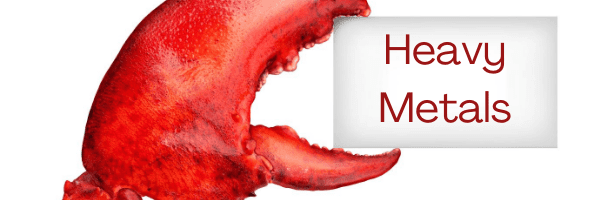Here’s a comparative table of EDTA, DMPS, and DMSA for the top 10 toxic heavy metals, listed in descending order of affinity (based on approximate log K values or practical clinical efficacy) for each chelator.
Stability & Chelation Affinity: EDTA vs. DMPS vs. DMSA
| EDTA (log K) | DMPS (log K) | DMSA (log K) |
| Chromium (Cr³⁺) ~23.0 | Mercury (Hg²⁺) ~35–40 | Mercury (Hg²⁺) ~32–38 |
| Uranium (UO₂²⁺) ~21.0 | Arsenic (As³⁺) ~20–25 | Arsenic (As³⁺) ~18–23 |
| Mercury (Hg²⁺) ~21.5 | Lead (Pb²⁺) ~18–22 | Lead (Pb²⁺) ~18–20 |
| Nickel (Ni²⁺) ~18.6 | Cadmium (Cd²⁺) ~18–20 | Cadmium (Cd²⁺) ~17–18 |
| Lead (Pb²⁺) ~18.0 | Nickel (Ni²⁺) ~13–15 | Nickel (Ni²⁺) ~12–14 |
| Gadolinium (Gd³⁺) ~17.5 | Chromium (Cr³⁺) ~8–10 | Chromium (Cr³⁺) ~8–10 |
| Cadmium (Cd²⁺) ~16.5 | Thallium (Tl⁺) ~8–10 | Thallium (Tl⁺) ~8–10 |
| Aluminum (Al³⁺) ~16.1 | Aluminum (Al³⁺) ~8–11 | Aluminum (Al³⁺) ~8–11 |
| Arsenic (As³⁺) ~8–10 | Gadolinium (Gd³⁺) ~6–10 | Gadolinium (Gd³⁺) ~6–10 |
| Thallium (Tl⁺) ~6–7 | Uranium (UO₂²⁺) ~10–12 | Uranium (UO₂²⁺) ~10–12 |
What These Numbers Mean
The higher the log K, the stronger and more stable the metal–chelating complex. A 1 unit difference in log K is a 10-fold difference in binding strength. That means the chelator with log K = 20 binds its target 10 times more tightly than the one with log K = 19. In general:
- Log K > 18 = very stable; can effectively chelate and help excrete the metal.
- Log K < 10 = weak or unstable; usually ineffective for these metals.
EDTA
Ethylenediaminetetraacetic Acid (EDTA) has moderate to high affinity for many toxic metals, especially lead, cadmium, uranium, and nickel. However, it is ineffective or weakly binding for arsenic, thallium, and gadolinium. This is why other agents like DMSA, DMPS, DTPA, or HOPO chelators are used when higher specificity or stronger binding is required.
DMPS
2,3-Dimercapto-1-propane-sulfonic Acid (DMPS) chelates metals through thiol (–SH) groups, which are particularly effective for soft, thiophilic metals like mercury, arsenic, lead, and cadmium, making it one of the most effective chelators for these metals. It is far less effective for lanthanides (like gadolinium), uranium, or chromium, which require chelators like DTPA or investigational HOPOs.
DTPA
Diethylenetriaminepentaacetic acid (DTPA) is best at binding to gadolinium. DTPA forms stable complexes with gadolinium, promoting its excretion through the kidneys. We use a specific protocol for removing gadolinium.
Sodium Thiosulfate
Sodium thiosulfate (STS) is indeed used as a chelating and detoxifying agent, but it works differently than classic chelators like EDTA or DMSA. We use it primarily to chelate platinum.
- Chelation: STS binds divalent and trivalent metal ions (especially calcium and platinum) by forming soluble complexes
- Sulfur donor: It can also act as a sulfur source, detoxifying reactive metabolites
- Antioxidant properties: STS scavenges free radicals and can mitigate oxidative stress, which adds to its protective effect beyond metal binding
HOPO
Hydroxypyridinone (HOPO) chelators are a relatively new and very interesting class of metal-binding agents. They were developed in part through U.S. Department of Energy–funded research as potential treatments for actinide contamination (like plutonium, americium, uranium), but they’ve also been explored for other metals.
HOPO chelators are next-generation metal-binding drugs, engineered for strong, selective, and oral chelation. Their biggest potential is in protecting against radioactive contamination, but they may also help in conditions like iron overload or gadolinium retention after MRI contrast. They are much stronger and more selective than older chelators like EDTA, DMPS, or DMSA.
For clinical Gadoinium based contrast agents, conditional stability constant for DTPA is around 16–19, depending on whether the chelate is linear or macrocyclic. HOPO ligands were developed to surpass DTPA in affinity and selectivity. Studies show HOPO affinity in the range of 27–29, which is several orders of magnitude stronger than DTPA. HOPO chelators are being investigated specifically for treating gadolinium retention in patients who’ve had repeated MRI contrast exposure.
As of this writing I’m not aware of HOPO being available for routine use.
DMSA
Dimercaptosuccinic Acid (DMSA) is a gold standard oral chelator, especially for lead poisoning in children, and also useful for mercury and arsenic exposure. It binds strongly to toxic metals while being safer and more tolerable than older agents like BAL. It is


